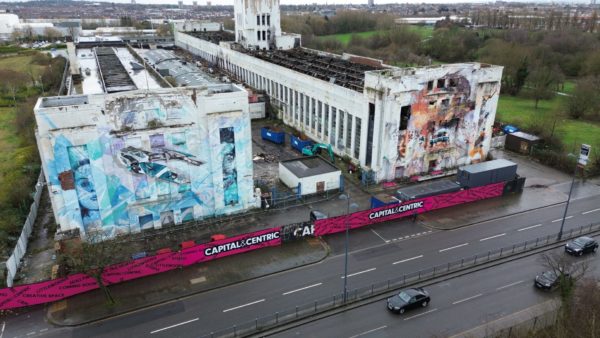Mabey Hire’s wireless monitoring during the partial demolition of the iconic Littlewoods building in Liverpool showed that its fire-damaged clock tower was in danger of collapsing.
Liverpool City Council recently approved a £70m plan to turn the former Littlewoods building into a world-class film and TV campus.
Developer Capital & Centric contracted Howard Stott Demolition to dismantle the interior structure of the building, now owned by Liverpool City Council. This involved retaining three facades and other original architectural features built in 1938.
Precautionary monitoring of rotational movement during the demolition process carried out by temporary works contractor Mabey Hire revealed that the clock tower, which forms a distinctive feature of the building, was at risk of a structural collapse.
The clock tower was seriously damaged in 2018 in a suspected arson attack. As a result, Capital & Centric’s structural engineer on the project, Curtins, requested that real-time monitoring be carried out during the demolition.
Sensor installation
Howard Stott Demolition subcontracted Mabey Hire for an initial 20-week programme in January 2024 after submitting a detailed proposal that provided comprehensive information on the positioning of 50 wireless movement sensors, along with weather measurement capabilities.
Within weeks, Mabey Hire’s in-house installation team were on the Littlewoods site fitting the compact monitoring devices across the rendered external face of the building, to measure rotation in the X and Y axes. All data generated was automatically transmitted by a single logger to Mabey Hire’s online Insite portal.
As a result of this monitoring data, the potential collapse of the clock tower was avoided.
Ryan Noon, project manager at Howard Stott Demolition, explained: “The property had sustained heavy fire damage and unfortunately deteriorated over a number of years prior to the start of this project. We were tasked with taking out the entire internals of the building while retaining the facade because of its importance locally.
“Deflection monitoring was required by our own engineers, Anduns, to provide us with a green-amber-red, traffic light-type warning of movement while the demolition was going on. This meant that we could see if there was any over-deflection, understand where and why the movement was occurring, and make the necessary changes, ensuring the structure was in a good state and ready for the redevelopment.”
Invaluable data
Howard Stott Demolition had used Mabey Hire’s environmental monitoring on previous projects.
“It proved invaluable, with the data showing us that the clock tower was twisting and rotating to a much greater degree than anticipated, leaning forwards very close to a public boundary,” Noon added.
“Following consultation with the client, the decision was taken to demolish and rebuild the tower. Meanwhile, the facade retention remains in place and work has otherwise proceeded as planned.”
Don’t miss out on BIM and digital construction news: sign up to receive the BIMplus newsletter.
The post Mabey wireless monitoring saves Littlewoods building from collapse appeared first on BIM+.


